Originally formed as the Providence Association of Mechanics and Manufacturers in 1789, today's Providence
Engineering Society is the outgrowth of a small group of engineers with a common interest.
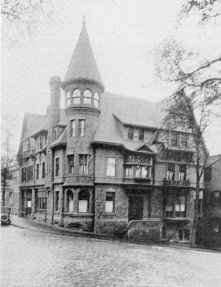 Meeting in the Old State House, this technical society came to hold considerable influence in the
City of Providence. The membership counted among its ranks a number of distinguished men
including Joseph R. Brown whose membership certificate was dated 1833. An impressive
library was amassed during the early years and in 1877-1878 became the nucleus of the
Providence Public Library. Over one-half of the books of the Public Library upon its
opening were contributed by the association. A contribution of $10,000 from the estate of
Joseph Brown became the financial cornerstone on what is today an impressive resource for
the entire state.
Meeting in the Old State House, this technical society came to hold considerable influence in the
City of Providence. The membership counted among its ranks a number of distinguished men
including Joseph R. Brown whose membership certificate was dated 1833. An impressive
library was amassed during the early years and in 1877-1878 became the nucleus of the
Providence Public Library. Over one-half of the books of the Public Library upon its
opening were contributed by the association. A contribution of $10,000 from the estate of
Joseph Brown became the financial cornerstone on what is today an impressive resource for
the entire state.
Following the dissolution of the original association, a group of men having an
interest in mechanics and mechanical engineering and its relation to the technology of the
day met in what was the old Providence Y.M.C.A. building. Present at that meeting in 1894
were such prominent representatives as William W. Chase of Cleveland Twist Drill and
George E. Merryweather, director of machine tool production for the War Industries Board.
Since the organization was to appeal to the interests of intelligent and progressive
mechanics, the name Rhode Island Association of Mechanicians was adopted. However, this
name was short-lived as it did not seem to fit the ambitions of the new organization's
leadership. The name was changed shortly thereafter to the Providence Association of
Mechanical Engineers. The organization was to carry the name for the next 20 years. The
first president of this new Association was Arthur H. Fuller who served from 1895 to 1897.
The Association held its first technical meeting on March 12, 1895. A lecture on
"Electricity" was delivered by Marion C. Happoldt to the membership. Mr.
Happoldt was a charter member and a tireless worker for the success of the organization.
By 1915, the organization had grown to over 195 members. During a joint meeting and
dinner with several hundred members of the Boston Engineering Society and the Providence
Association of Mechanical Engineers it was decided that the interests of both
organizations would best be served by a merger into a new society. This new society became
what is now known as the Providence Engineering Society. The first president to serve the
organization at that time was Arthur H. Annan.
One of the objectives of the re-organization was to bring together engineers of many
different disciplines, recognizing the common experiences and background shared by members
of the engineering profession.
The outbreak of World War I saw the membership considering not only routine topics of
the day but devoting much of their combined expertise to engineering matters connected
with the war. Many of the 550 members were engaged in designing, drafting, and developing
newer machine setup procedures in order to increase the production of gauges and
munitions.
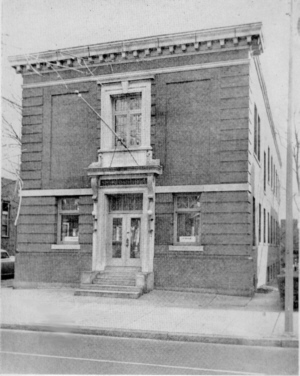 The Providence Engineering Society grew rapidly over the next ten
years, reaching over 1,250 members. It was soon realized that a permanent home should be
sought for what was the oldest engineering society in the nation. A constitution was
drafted which allowed for the creation of a fund designed for the purchase of such a
building. By 1934, this fund would reach $21,000. Early in 1934, a building formerly
occupied by New England Telephone and Telegraph Company at 195 Angell Street in Providence
was found which would serve the needs of the membership. On April 26, 1934, the purchase
was consummated and on November 28, 1934 became the headquarters of the Providence
Engineering Society during an appropriate ceremony. The acquisition of the building marked
the 40th anniversary of the founding of the Providence Association of Mechanical
Engineers, the forerunner of the present organization. Members devoted time toward
renovating the new building, even creating a dark room for the use of the Camera Club,
then a section of the Providence Engineering Society.
The Providence Engineering Society grew rapidly over the next ten
years, reaching over 1,250 members. It was soon realized that a permanent home should be
sought for what was the oldest engineering society in the nation. A constitution was
drafted which allowed for the creation of a fund designed for the purchase of such a
building. By 1934, this fund would reach $21,000. Early in 1934, a building formerly
occupied by New England Telephone and Telegraph Company at 195 Angell Street in Providence
was found which would serve the needs of the membership. On April 26, 1934, the purchase
was consummated and on November 28, 1934 became the headquarters of the Providence
Engineering Society during an appropriate ceremony. The acquisition of the building marked
the 40th anniversary of the founding of the Providence Association of Mechanical
Engineers, the forerunner of the present organization. Members devoted time toward
renovating the new building, even creating a dark room for the use of the Camera Club,
then a section of the Providence Engineering Society.
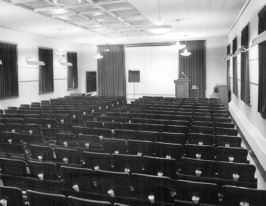 Not long after settling into new quarters, the membership was faced with another war -- World War II.
The intense industrial activity required during the war effort placed heavy strains on the time available
for society events. Some of the normal functions, such as
meetings of the junior section and even the annual banquets were curtailed during this
period. The membership once again contributed to the wartime need for manpower in many
important industrial developments, surveys, and confidential studies which included
development and production of the Atomic Bomb. Sixty-five of the society membership
actively participated in the armed forces.
Not long after settling into new quarters, the membership was faced with another war -- World War II.
The intense industrial activity required during the war effort placed heavy strains on the time available
for society events. Some of the normal functions, such as
meetings of the junior section and even the annual banquets were curtailed during this
period. The membership once again contributed to the wartime need for manpower in many
important industrial developments, surveys, and confidential studies which included
development and production of the Atomic Bomb. Sixty-five of the society membership
actively participated in the armed forces.
After the war, society activities slowly returned to normal with the resumption of
regular meetings and the annual banquet. The war had produced a number of technical
developments in which the Providence Engineering Society members figured prominently.
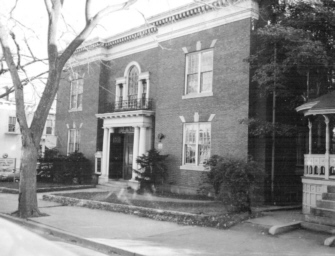 Through the years, the Providence Engineering Society has been
connected with some of the most prestigious names in engineering. A few of the more
prominent were George Corliss, designer of the Steam Engine, John Ripley Freeman a
consultant on the Panama Canal, authority on Earthquake phenomena, and holder of Honorary
Degrees from Brown, Tufts, Penn, and Yale as well as Frederick Connent, holder of over 30
patents.
Through the years, the Providence Engineering Society has been
connected with some of the most prestigious names in engineering. A few of the more
prominent were George Corliss, designer of the Steam Engine, John Ripley Freeman a
consultant on the Panama Canal, authority on Earthquake phenomena, and holder of Honorary
Degrees from Brown, Tufts, Penn, and Yale as well as Frederick Connent, holder of over 30
patents.
Another prominent member of the Society was Professor Zenas R. Bliss. A nationally
famous engineer and educator, Professor Bliss served as an active member of the Providence
Engineering Society and American Society of Mechanical Engineers for over 50 years. He was
noted for a number of outstanding technical achievements, serving as Chairman on the ANSI
B-4 Standards Committee on Allowance and Tolerances for Cylindrical Parts, Limits and Fits
and serving for over 20 years on the ANSI B-1 Committee on Screw Threads. Professor Bliss
taught at Brown University for 35 years.
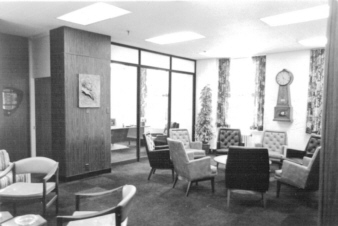 As time went by, the Providence Engineering Society also came to
be known for its contributions to education. A committee was established designed to
cooperate with the Guidance Counselors Association of Rhode Island as well as High School
and Junior High Principals. Its purpose was to provide advice to students interested in
pursuing engineering as a career. Soon, the work of this committee resulted in the
formation of a local scholarship fund to provide financial loans to deserving candidates.
As time went by, the Providence Engineering Society also came to
be known for its contributions to education. A committee was established designed to
cooperate with the Guidance Counselors Association of Rhode Island as well as High School
and Junior High Principals. Its purpose was to provide advice to students interested in
pursuing engineering as a career. Soon, the work of this committee resulted in the
formation of a local scholarship fund to provide financial loans to deserving candidates.
By 1955, the number of members in the society had increased to 1,050. The Society moved
its headquarters to the Churchill House in 1968. This was to be its home for only a single
year. In 1969, the Society moved from its temporary home on 155 Angell Street to new
quarters at 615 Turks Head Building. This was to be the Society's headquarters for the
next 10 years. By January 1977 the membership ranks of the Providence Engineering Society
had swelled to over 2,000. In 1979 the organization moved to a building on Orms Street in
Providence. In 1988, the Providence Engineering Society took up residence at 9 Newman
Avenue in East Providence, which is its current home.